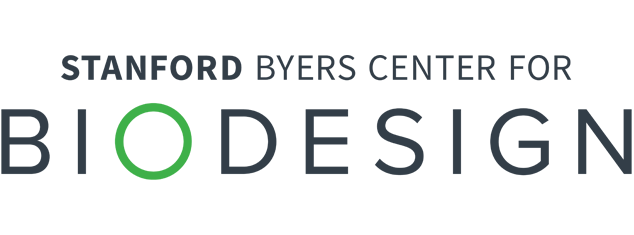Setting
Stanford Biodesign is multidisciplinary and dynamic, bringing together faculty, students, and fellows from across Stanford University to create innovations with the power to change healthcare. Our location in the James H. Clark Center at the heart of the campus is truly unique, allowing us to connect with leaders and tap into world-class resources and infrastructure in business, medicine, design, and engineering on a continuous and collaborative basis. Learn more about Stanford Biodesign’s setting by browsing the map below.
Stanford University’s location in the center of Silicon Valley is another unparalleled advantage for Stanford Biodesign and the people we train. Each year, more than 200 industry leaders from the local health technology ecosystem contribute to our programs, advising our fellows, students, and faculty and helping them translate their technologies into patient care. This network is one of the most valuable benefits of training at Stanford Biodesign since many of these connections last a lifetime.









Biodesign and Our Points of Collaboration
- Stanford Byers Center for Biodesign The Stanford Byers Center for Biodesign includes open working space for our fellows, a health technology prototyping collaboratory, and meeting rooms equipped for ideation and design sessions. Check out our Contact page for maps and directions. Take a walk through Stanford Biodesign (video).
- James H. Clark Center, Home of Bio-X Biodesign is located at the James H. Clark Center, which is the hub of Bio-X, Stanford’s pioneering interdisciplinary sciences institute. The mission of Bio-X is to catalyze discovery by crossing the boundaries between disciplines, to bring interdisciplinary solutions, and to create new knowledge of biological systems, in benefit of human health.
- School of Medicine We are just steps away from the Stanford University School of Medicine, one of world’s premier medical research and teaching institution. Just a block further, our trainees can access the hospital and clinics associated with Stanford Health Care where they complete a portion of their clinical immersion.
- School of Engineering The Stanford University School of Engineering is only a five minute walk from Stanford Biodesign, keeping us in touch with cutting-edge advancements in bioengineering, mechanical engineering, electrical engineering, computer science, and more.
- Graduate School of Business The Stanford University Graduate School of Business is one of the top business schools in the world, well-known for its interdisciplinary approach to business. Stanford Biodesign collaborates with the Graduate School of Business on courses, events, and learning materials.
- Hasso Platner Institute of Design (d. school) Our faculty, fellows, and students participate in workshops at the d. school to incorporate aspects of design thinking into their work, especially during the “invent” phase of the biodesign innovation process when they’re devoted to generating and screening solution concepts.
- Product Realization Lab The Product Realization Lab is a multi-site teaching facility affiliated with Stanford’s Mechanical Engineering department and the d.school. Our trainees use the Product Realization Lab to help them bring their ideas to life through design, prototyping, and testing.
More About Us
From the story of our founding and growth to our promise for the future of health technology innovation, there’s so much to discover about Stanford Biodesign.
